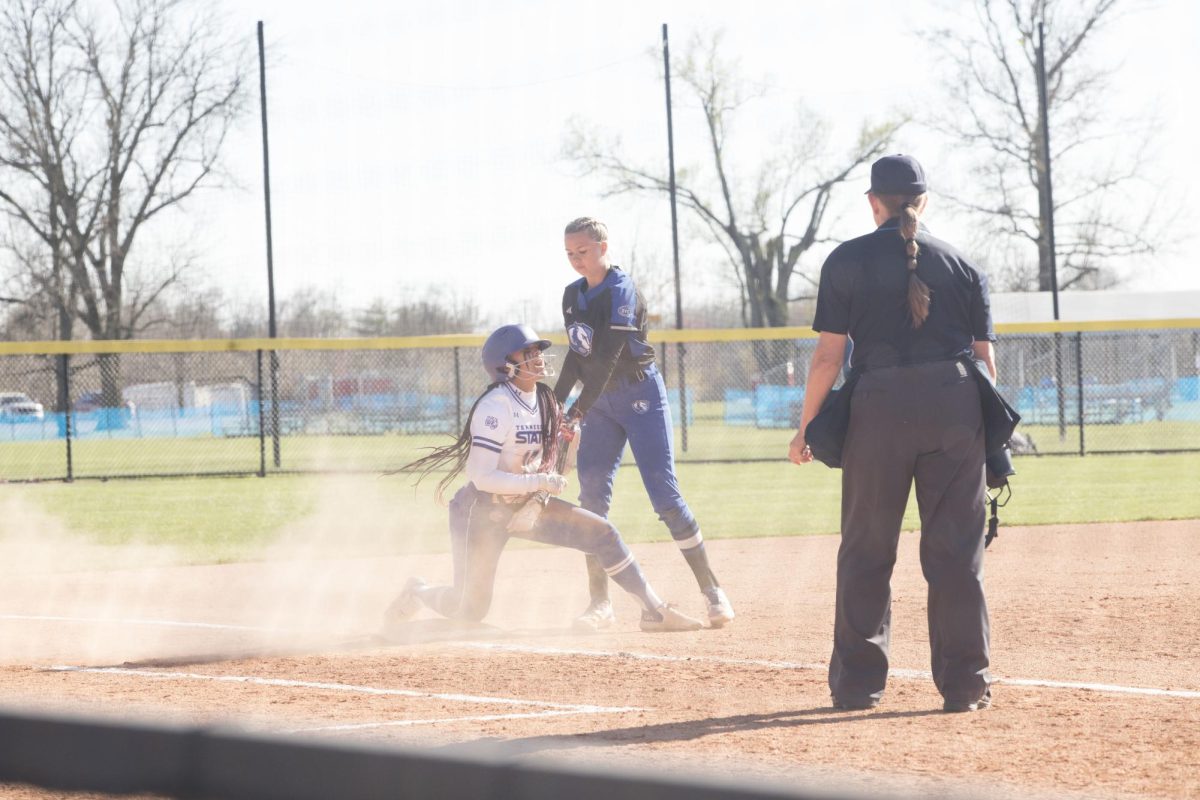Column: How beer and hip hop killed Michael Brown
August 27, 2014
In an editorial for the New York Times this week, John Eligon had this to say about Michael Brown, the unarmed black teenager shot dead by police on Aug. 9:
“Michael Brown, 18, due to be buried on Monday, was no angel…. Shortly before his encounter with Officer Wilson, the police say he was caught on security camera stealing a box of cigars, pushing the clerk of a convenience store into a display case. He lived in a community that had rough patches, and he dabbled in drugs and alcohol. He had taken to rapping in recent months, producing lyrics that were by turns contemplative and vulgar. He got into at least one scuffle with a neighbor.”
As one should expect, the statement has provoked serious criticism across social media, with many rallying around calls of “most kids do those things… that’s why they’re kids.”
And of course, they’re right. They’re also backed by data.
According to FiveThirtyEight.com, which used information provided by the Centers for Disease Control, if Brown was, indeed, “no angel,” than neither are most of his peers.
Of 13,583 ninth-through 12th-graders surveyed, two-thirds said they had consumed alcohol at least once in their lives. 41 percent said they had used marijuana one or more times in their lives, and 1 in 3 young men had been involved in a physical altercation within 12 months of the survey (There were no statistics pertaining to rap music).
Simply put, if we’re going to kill every teenager who smokes weed, drinks and likes Hip Hop, we’d better get a lot more body bags.
And yet, this line of reason still misses the essence of the argument, focusing on what is being said about Brown, not the far more telling why.
Because to even hint that, for any of these petty crimes, Michael Brown deserved to die, points at a much more frightening and systemic mentality towards black men in America, one that supposes their lives less worthy by their very nature, their slaying more justifiable.
Cases like Brown’s, or Trayvon Martin’s, or Ronald Madison’s, or Ramarley Graham’s, or Sean Bell’s, Eric Garner’s, and Manuel Loggins Jr. are each an indictment of the extent to which the “guilty until proven innocent” mentality has permeated not just into police conduct, but American culture.
Greg Howard of Deadspin elaborates:
“To ascribe this entirely to contempt for black men is to miss an essential variable, though—a very real, American fear of them. They—we—are inexplicably seen as a millions-strong army of potential killers, capable and cold enough that any single one could be a threat to a trained police officer in a bulletproof vest. There are reasons why white gun’s rights activists can walk into a Chipotle restaurant with assault rifles and be seen as gauche nuisances, while unarmed black men are killed for reaching for their wallets or cell phones, or carrying children’s toys.”
Cases like that of Cliven Bundy, the rogue rancher whose militia initiated an armed stand-off with federal police this summer, are given the benefit of the doubt in the court of public opinion. We roll our eyes at the insanity of it all, sure, because we understand them simply as kooks with assault rifles.
But that sentiment is rarely extended to unarmed black men.
The Bundy militia can threaten using women as shields against police because, well, “they’re crazy, I guess.”
Yet a black kid in Florida can’t buy Skittles and lemonade without fear of being shot, killed and posthumously questioned as a drug peddler.
And meanwhile, as proud Americans flock to the Bundy ranch, ready and willing to die fighting “tyrants,” a 31-year-old Marine sergeant and father of three is being shot dead in front of his 9-year-old daughter for having a “mean” expression on his face.
His name was Manuel Loggins Jr.
He was an unarmed black male.
There are no reports at this time of whether he liked beer or hip hop.
Robert Downen is a senior political science and journalism major. He can be reached at 581-7912 or [email protected]











































